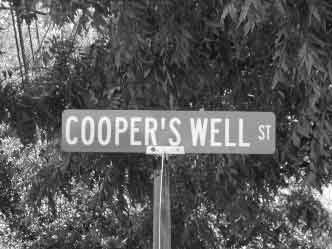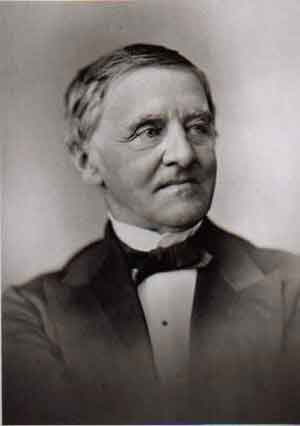"Raymond Years Ago"
By George W. Harper
Journalist - Editor - Owner Of Hinds County Gazette 1845-1883
A Series Published in the Hinds County Gazette, 1878-1879
From the Gillespie Collections edited by Pattie Adams Snowball and Rebecca Blackwell Drake
Home Page
Harper Arrives in Mississippi
Vicksburg & Meridian RR
Businesses in 1844
The Raymond Bar
Early Merchants
1844 Businesses
Seat of Justice
Cotton Industry
Early Churches
Establishment of Schools
John B. Peyton
Raymond Area Homes
Medicinal Resorts & Spas
The Mexican War
Early Churches
Early Schools
Raymond Female Institute
Raymond Military Institute
McNutt-Foote Debate
1844 Presidential Election
Local Elections of 1845
Literary Raymond
Raymond Fires
Old Log Jail
Death of Jos. Stewart
Murder of Benj. Sims
Duel Ends in Death
Raymond & Bolton RR
Harper Elected Mayor
Chaos at Oak Tree Hotel
Great Fire of 1858
Early Area Settlements
-
Amsterdam
-
Yeizer's Store
-
Newtown
-
Meridian Springs
-
Sturgiss Store
-
Dry Grove
-
County Line
Rev. Fisk's Biology Class
Fisk Charged with Fraud
Fleetwood Tragedy
Local Racetracks
Dignitaries Visit Raymond
Winning the Lottery
Fire Company No. 1
"Devoted & Valued Friend"
Tribute to Amos Johnson
Yellow Fever Strikes Raymond
Doctors Treating Victims
Cooper's Well
Mississippi Springs
Newspaper Entrepreneurs
Yankees Sack Gazette Office
Fate of Editorial Giants
Henry Clay Defeated in 1844
Stray Cats in Raymond
"A Remarkable Occurrence"
Blow That Punky Bell to Hell"
Isom Bldgs Destroyed
1851 Gubernatorial Election
Union Ticket Sweeps State
New Raymond Courthouse
Gibbs Building Rebuilt
Hinds Co. Poor House
Schools Struggle
Murder of Addie Owens
War comes to Raymond
The Battle of Raymond
Willie Foote Captured
Make-shift Hospitals
Yankees Occupy Raymond
Raymond Lodge No. 21
Odd-Fellows' Graveyard
Bolls Incarceration
Crimes Blamed on Whisky
Peyton's Willow Tree Prank
Politics in Raymond
Presidential Election 1860
Hinds Co. for Succession
Raymond Fencibles Organized
Churches Reorganize
The Clinton Riot of 1875
Why the Great Uneasiness?
Deaths of Sivley & Thomson
"Kill the Raymond Men"
Harrison Election
Political Gatherings
Event at Dupree's Grove
Presidential Election 1876
Governor Ames Impeached
Great Wrongs Investigated
Fight the Devil with Fire
Reconstruction Era
Harper Ends with Poetic Vision
Part XXI
Presidential Election of William Henry Harrison
A way back in the year 1840 - during that unprecedented and memorable canvass which placed the good old Gen. Harrison in the Presidency - immense meetings of the people were held in Raymond. Raymond was then a much larger and more prosperous town than it is now, and, it is well to remember, too, that Hinds county then had a larger white population than it has today. There were then many small farmers in the county - men who were afterwards bought out by the large cotton planters, and sent forward towards the frontier to clear new lands and open up new farms, again to be bought by that class whose hearts ached to own all the land in sight. We are told, furthermore, that during that campaign the Harrison men erected a log cabin on Port Gibson street, that they decorated it with coon-skins, &c., and that there they held daily and nightly meetings. All this, however, transpired before our time, and we cannot with safety detail what then occurred.

In 1840, during the presidential election, William Henry Harrison was portrayed by a Baltimore newspaper as a shallow-minded man, content to sit “in his Log Cabin” with a pension and “a barrel of Hard Cider.” The smear attempt backfired and Harrison, using the log cabin and frontiersman image to his advantage, was elected the 9th president of the United States. Harrison died in office less than a month after his inauguration. |
Political Gatherings at Alston Springs
In 1850, 1851, 1855, and 1860, we witnessed very large political gatherings in Raymond, held in the interest of the old Whig, Democratic, Union, American and Southern Rights parties. They assembled, as a general rule at what was then known as Alston’s Springs, where was a beautiful grove, convenient and ample barbeque grounds, and excellent water privileges. Judge Sharkey, Jefferson Davis, H. S. Foote, W. A. Lake, P. W. Tompkins, A. G. Brown, A. R. Johnston, Fulton Anderson, and other equally well known and influential Mississippi statesmen, often thundered their eloquence there to very large and enthusiastic audiences.
|
And there too were often gathered vast numbers of the beautiful women of Hinds, as much interested as their fathers, husbands, brothers, and lovers, in the political questions at issue - and there too was often displayed as magnificent barbeques and as inviting and substantial basket dinners, as any country ever afforded. Those were grand old times. And although party feeling often ran high - often stepped over sound judgment and propriety - and every man stood firm to his party and its teachings, regardless of mere personal considerations - such was the manhood and true nobility of the people, that blackguards and blackguardism [rude and unscrupulous people] was always regarded as disgraceful, and the best of personal feeling always prevailed. It was all a mere difference of opinion - and freedom of opinion was tolerated. The knife and the pistol were seldom seen then. Indeed, there were men in those days - they were gentlemen.
Triumphant Event Held August 18, 1875
August 18, 1875, witnessed a tremendous outpouring of the people, with all the pomp and circumstance of a triumphant march. The most vitally important contest in the State’s history was in hand. Carpet-bagism, imbecility and rank dishonesty, were to be overthrown, or Mississippi’s sun was to set in midnight’s ruin. It was by all odds the largest, grandest and most earnest meeting that had ever assembled in Hinds county. Fully 5,000 people, it was estimated, were that day on the grounds in Dr. Dupree’s Grove, with cannon, brass bands, flags, banners, and all the enthusiasm possible for men to manifest. It was a day of triumph for the Democratic-Conservative party, and placed upon our banners the word Victory in letters of living light. Geo. W. Harper presided over the meeting, and it was addressed, in burning words, by C. E. Hooker, R. V. Booth, and others.
Presidential Election of 1876
But the grandest, mightiest, and most overwhelming assembly of the people in the history of the town and county, if not of this part of the State, was preserved for the 18th of August, 1876. Gov. A. G. Brown acted as president, with the Presidents of the 25 Clubs of the county acting as Vice Presidents, and the Secretaries of the same acting as Secretaries. E. Barksdale, C. E. Hooker and others, were the speakers. It was held at Dupree’s Grove, and the estimate was that there were 10,000 people present. It was a meeting of the people to express an opinion on the Presidential nominations and the great crimes committed by Grant and the Republican party. Resolutions were offered fully endorsing Tilden and Hendricks and the Democratic Platform - properly arraigning Grant and his diabolical administration - and pledging Hinds county to give 3,000 majority against Hayes and Radicalism. The resolutions were adopted by a vote akin to thunder, and not a voice was uttered in opposition.
There were in 1876, at the time this meeting was held, 25 active Democratic-Conservative Clubs in the county, scattered over an area of nearly 1,000 square miles. Every Club had its one or more pieces of artillery, and its flags, banners, standards and other articles of display. It was understood, that the Clubs in a body should attend this meeting - that every Club should fire a salute at sunrise - that each Club should form in order, and march to Raymond, the centre of the country, by the most direct route, discharging its artillery at short intervals - that the artillery should be the signal, and that the processions from all the points of the compass, (north, south, east and west,) should enter the town firing and with flags flying, at the same time.
The day was most auspicious and here in the centre of the county, at or before sunrise, we distinctly heard the thrilling signal of preparation from every part of this county, with its 1,000 square miles of territory. Away off to the north, the south, the east and the west, the discharge of artillery was rapid and constant - while here, at the centre, a roar was kept up equaled perhaps only by an artillery duel in a regular engagement. We could distinctly trace the movements of the vast columns, and with accuracy calculate their distances; and as they approached the town, the roar was so constant, that it was really deafening. The thousands reached the village at about 12 o’clock, m., and such a display was never before, and most likely will never again be afforded in this part of the State.
The cannon were all put in position on the public square, and continued to thunder throughout the day. The brass bands were marched to the Grove, where they performed good service. The flags, banners, &c., were also taken to the Grove. Gov. Brown presided with great dignity on the occasion - the assembly was addressed most eloquently and grandly - the dinner was nearly sufficient for the immense draft made upon it, and the day passed off most gloriously.
When election day came, Raymond gave 584 votes for Tilden, and 91 for Hayes; and the county 4519 for Tilden, and 1468 for Hayes. And to this wonderful result the display on the 18th of August was the principal factor.
| ||||||
All photographs and illustrations were edited into the series by Pattie Snowball and Rebecca Drake.
Copyright © 2008 PattieAdams Snowball, James and Rebecca Drake


